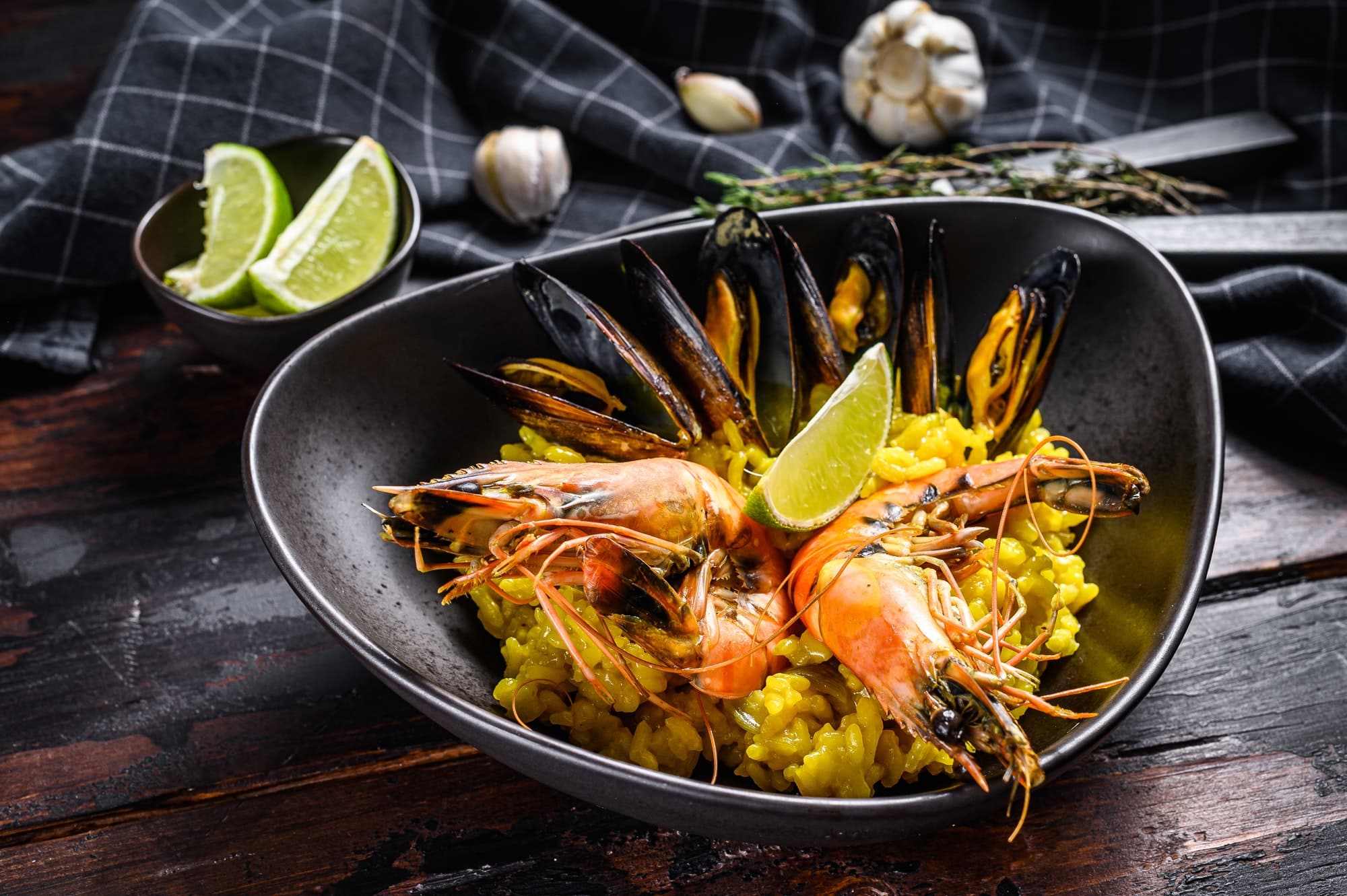How to Make a Traditional Spanish Paella with Rabbit and Snails?

A rich and hearty dish that originates from the east coast of Spain, paella is a true culinary delight. This one-pan wonder is a versatile dish that can be created with a variety of ingredients, including seafood, chicken, or even rabbit and snails, as we’re going to explore today. Paella’s secret lies in the rice, cooked to perfection and richly infused with saffron and other aromatic spices. However, mastering the art of making traditional Spanish paella can be a bit intimidating. Don’t worry – we’re here to guide you through it.
Selecting the Right Ingredients
The magic of a delicious paella begins with the selection of the perfect ingredients. The three fundamental components of any paella are the rice, the protein, and the seasonings, especially saffron.
Cela peut vous intéresser : What’s the Secret to Crafting the Perfect Japanese Matcha Roll Cake?
Rice is the heart of the paella. The Spanish use a short-grain variety known as bomba rice, which absorbs liquids well and maintains a nice, firm texture. If bomba rice is not available, Arborio rice, commonly used in risottos, could be a suitable substitute.
The proteins used in a paella can vary widely, and in our case, we’re going with rabbit and snails. Both are traditional choices in an authentic Valencian paella, offering a combination of delicate, gamey, and earthy flavors.
A lire en complément : What’s the Key to a Perfectly Creamy Gourmet Clam Chowder with Fresh Herbs?
As for seasonings, saffron is indispensable, adding an irreplaceable aroma and a distinct yellow color to the dish. Other essential seasonings include smoked paprika and fresh rosemary.
Preparing the Pan and the Initial Cook
Paella is not just the name of the dish, but also the name of the pan used to cook it. A typical paella pan is wide, shallow, and made of thin metal. This allows for even heat distribution and helps the rice cook uniformly.
Start by heating a generous amount of olive oil in the pan. Add the rabbit pieces, browning them on all sides. This procedure should take about 10 minutes. Once browned, remove the rabbit and set it aside. To this oil, add the snails. Cook them for about 5 minutes, then remove and set aside with the rabbit.
Adding Vegetables and Rice
To the oil left in the pan, add your finely chopped vegetables, such as onions, bell peppers, and tomatoes. Cook until they soften and start to caramelize.
Next, add the all-important rice to the pan. Stir well to ensure each grain is coated with oil. This step is crucial as it helps the rice absorb the flavors from the other ingredients.
Infusing with Saffron and Simmering
Now comes the time to introduce the golden strands of saffron to the dish. Steep the saffron threads in a bit of hot water to release their color and aroma before adding them to the pan.
Return the rabbit and snails to the pan and add in green beans or runner beans, another traditional ingredient. Pour in enough water or broth to cover the ingredients. From this point, let everything simmer calmly, allowing the rice to absorb the fragrant liquid, typically for about 15-20 minutes.
The Final Touches
As your traditional Spanish paella with rabbit and snails nears completion, it’s time for the finishing touches. Once the rice has absorbed most of the liquid, arrange red bell pepper strips and sprigs of rosemary on top for a bit of color and fresh, herbaceous aroma.
At this point, resist the urge to stir. A coveted feature of a well-made paella is the ‘socarrat’ – the crispy layer of rice that forms at the bottom of the pan. Achieving this requires leaving the dish untouched for the last few minutes of cooking.
While we don’t have an ending note for this piece, we hope this guide encourages you to explore the traditional Spanish cuisine. Happy cooking!
Presentation and Serving your Paella
The last step in your quest to master the traditional Spanish Paella with rabbit and snails is presentation and serving. Authenticity is the key here, just as with the selection of ingredients and the cooking process.
After your paella has finished cooking, remove it from the heat and let it rest for a few minutes. This allows for the flavors to fully blend together. Cover the pan with a clean tea towel. This helps to retain the heat and allows for any remaining steam to be absorbed by the rice, making it even more delicious.
When serving, the paella pan is typically brought directly to the table. This is part of the cultural experience of eating paella and allows everyone to admire the beautiful dish before they dig in. It is also customary to serve paella directly from the pan. Each person usually eats from their own ‘sector’ of the pan, starting from the perimeter and working their way towards the center. This is because the outer edge of the pan is where the coveted ‘socarrat’ is located.
To accompany your paella, a simple green salad is a common choice. For drinks, a crisp white wine or a jug of traditional Spanish sangria pairs beautifully with the rich flavors of the paella.
Conclusion: Savoring the Authentic Spanish Paella
Achieving the perfect Spanish Paella with rabbit and snails is a labor of love, but the end result is absolutely worth it. From choosing the right ingredients to mastering the cooking process, every step contributes to the final, delicious outcome.
Remember, the key to a great paella lies in the quality of the ingredients, the choice of protein (in this case, rabbit and snails), the use of authentic Bomba or Arborio rice, and the bold flavors of saffron and other seasonings. Not to forget, the authentic Valencian paella is served directly from the paella pan, allowing everyone to enjoy the crispy ‘socarrat’.
As intimidating as it may seem to first-time cooks, making a traditional Spanish paella is a rewarding experience. It’s not just about the end product, but also the process of cooking itself that offers a sense of accomplishment.
So, don’t wait any longer. Get your ingredients, grab your paella pan, and start your journey towards mastering the art of making the best Spanish paella. Happy cooking!
